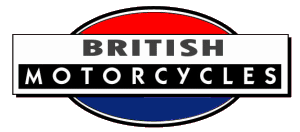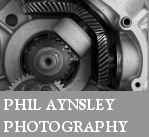



A novel and ingenious arrangement for starting the engine of the new pattern L.M.C. by means of the left footboard. Under the footboard a channel bracket is arranged, a ball bearing fitted to a short crank travelling along this channel. The dotted white line shows the extent of the movement of the footboard. One push down is enough to start the engine.
Lloyd Motor Eng. Co., Monument Road, Birmingham.
The exhibit of the above company is of particular interest. The chief novelty for 1910 is a distinct improvement in Lloyd's variable free engine pulley. Our readers will remember that this pulley is put into operation by wedging apart the flange with the aid of a phosphor bronze wheel. This wheel is now operated by means of a lever working in a quadrant, which gives the low, high, and neutral position. The engine is now fitted with a m.o.i.v. valve, placed side by side with the exhaust valve. Some good improvements have been made in detail. Two clips for the control wires are fitted each side of the steering head. These are in the form of a small spiral cable which can be inserted in the clips without threading, and yet without any fear of their working loose. The luggage carrier fitted also holds the toolbag which is flush with the carrier, thus preventing it from interfering with the luggage in any way. A partial chain protector, which serves to protect the free wheel adequately from wet, is also provided. Care has also been taken to provide a substantial cover to exclude any wet or moisture from the magneto.
The most interesting machine on this stand is one provided with long flexible rubber-covered footboards. The near side one is hinged, and if lifted up reveals a crank connected with the rear hub by means of a chain. When pressed down this gives the engine a smart impulse, with the result that the engine is easily started. No pedalling gear is provided.
The foot brake is arranged so as be be worked by the hand as well if required, a Bowden wire control by a lever on the handle-bar being attached to the operating pedal. This brake also simultaneously applies two shoes to the rear belt rim. The cut-out is provided with a short serrated quadrant which is easily operated by means of the toe. It is also interesting to note that m addition to the throttle and air lever the magneto advance is controlled by a lever on the handle-bar. Machines are shown on this stand fitted with 1909 and 1910 engines, and one is shown fitted to a eidecar. Such well-known points as the universally [jointed?] connecting rod and the well-known magneto drive is still retained. It is interesting to note that the Lloyd [?]engine device can also be fitted to other makes of machines.
The Motor Cycle, November 22nd 1909 page 917